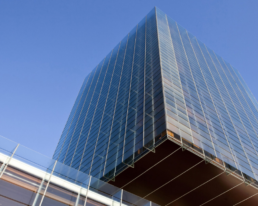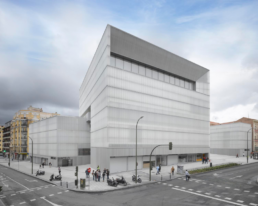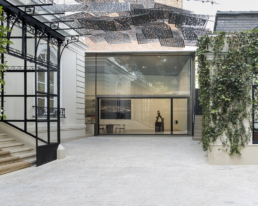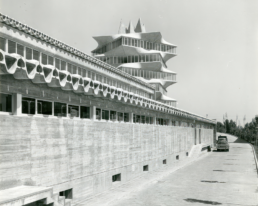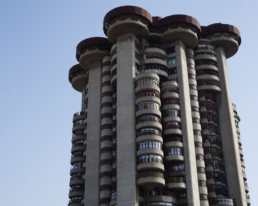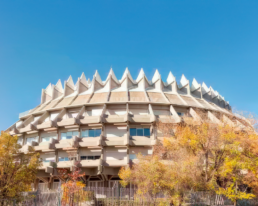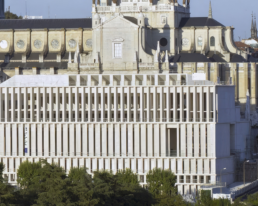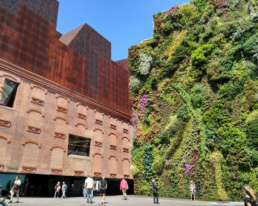Architectural Projects to Visit in the Spanish Capital
DATE
12.09.2025
Madrid is a city that stands out not only for its historical heritage but also for a remarkable collection of contemporary architecture that deserves to be discovered.
Among the most emblematic examples is the CaixaForum, by Herzog & de Meuron, a cultural center that transforms a former power station into a vibrant, singular building, with its characteristic rust-colored façade and vertical garden. Also essential is a visit to the recently inaugurated Royal Collections Museum, designed by Tuñón and Mansilla, a monumental intervention that connects Habsburg Madrid with the Campo del Moro landscape, combining tradition and innovation with rigor and sensitivity.
Another milestone of Madrid’s architecture is the Institute of Cultural Heritage of Spain, known as the “Crown of Thorns,” designed by Fernando Higueras and Antonio Miró. This circular, highly expressive exposed-concrete building has gone from being an oddity to becoming a benchmark of Brutalism in Spain. In a different but equally essential register is Torres Blancas, the iconic project by Francisco Javier Sáenz de Oiza, a residential tower where organic form and structural ambition merge into a unique piece that challenges conventional housing block typologies.
The panorama is completed by more recent works, such as the headquarters of the Arquia Foundation, designed by Emilio Tuñón, which transforms an existing construction into a contemporary space of great sobriety and elegance. Meanwhile, the Hydraulic Studies Center—one of Miguel Fisac’s lesser-known but most admired works—demonstrates his mastery in the use of concrete and his deeply personal approach to the relationship between technique and form. Not far away, the Castelar building by Rafael de La-Hoz Arderius stands out for its structural clarity and expressive materials, establishing itself as one of the icons of Madrid’s Paseo de la Castellana.
Finally, two cultural spaces round out this tour of Madrid’s contemporary architecture. On one hand, the Norman Foster Foundation, located in a building restored and expanded by the British architect’s own studio, houses part of his personal archive and hosts activities related to the city and design. On the other, the Barceló Market, a contemporary reinterpretation of the traditional neighborhood market by Nieto and Sobejano, combines functionality, sustainability, and a bold architectural language. Together, these projects form a must-see itinerary for those wishing to experience Madrid’s architecture from a contemporary perspective.
MArch Valencia. Arquitectura y Diseño
© 2025 MArch Valencia. Arquitectura y Diseño
Privacy policy | Cookies policy | Terms of use



